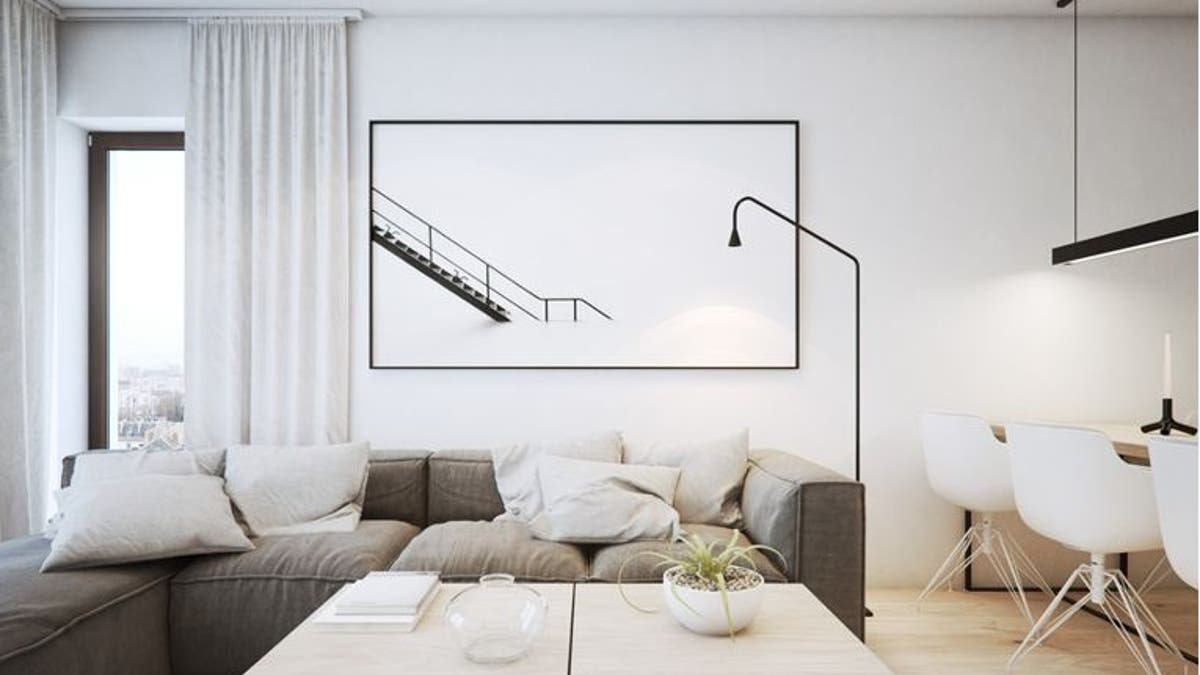
As a professional home organizer, I work with many clients who are on a quest to pare down their possessions to create a tranquil home where they can relax and recharge. Often, we look together at inspirational photos of minimalistic homes with floor-to-ceiling windows, clean-lined furniture and muted color palettes.
But remodeling, or buying all new furniture, simply to achieve a minimalist look somehow seems to defeat the purpose of paring back in the first place. Here’s how to take the lessons of minimalism and apply them in your home, no matter its style.
The Essence of Minimalism
We’ve written about minimalism in the past and identified several key elements to getting this look, including clutter control, clean furnishings, limited palettes and bare windows. In a nutshell, minimalism in interior design means creating a sense of spaciousness in rooms (no matter their square footage) using a minimum of furniture and details. Though most of us associate minimalism with modern furniture that has clean, straight lines, minimalism truly can be achieved with any decor style.
RELATED: Learn How to Calculate Your Square Footage From a Pro
A Practical Road Map
Take these basic steps to imbue your room with a minimalist feel.
1. Remove excess clutter. Removing clutter is the first step to creating a minimalistic home. If you do not truly love or need something, perhaps it is time to let it go. For most of us, this is easier said than done. To get you motivated, I recommend saving inspiring photos of beautiful and decluttered spaces in a Houzz ideabook, as well as reading The Life-Changing Magic of Tidying Up by Marie Kondo. The hardest part of this process is deciding what to keep and what to let go. If necessary, enlist the help of a friend or professional home organizer to assist you in achieving your goals.
2. Use a muted color palette. White is a common paint choice in minimalism, as are muted tones of gray, cream and beige. Fresh paint is a relatively inexpensive way to change the look of a room, and I recommend considering a matte finish so that walls do not appear shiny.
If your budget allows for some redecorating, you may want to use similar colors for walls, window treatments, upholstery and flooring to give a room a cohesive, tranquil appearance. To give the room more depth, you can vary the textures and materials you choose. If replacing furniture and decor items does not fit your plans, consider simply toning down your palette by limiting colors and patterns. Paring down the number of items can also help infuse a more restful mood.
3. Add an intense pop of color. Although not necessary, a small touch of vivid color can look fantastic in an otherwise muted room. Consider limiting bright colors to a few pillows, small decor pieces or a small accent wall, all of which I recommend you keep in the same color.
4. Choose large wall decor. Consider limiting to one large picture or mirror to hang on the wall, instead of several smaller items grouped together. This will prevent the room from appearing too busy.
5. Avoid overcrowding. Blank walls and empty corners work well in the minimalist aesthetic, so don’t stuff your room too fully. Also avoid heavy-looking furniture, as well as too many small pieces. In fact, you don’t even need an area rug. Keep decorative pillows, throws and coffee table decor to a minimum.
6. Embrace the outdoors. If privacy is not a concern, consider going without window treatments to bring the outdoors in. If your budget allows, you might install solar shades to block out excess sun. Ideally, they’ll be barely noticeable while they protect your furniture and artwork from harmful rays.
How to Get the Benefits of Minimalism in Your Home
You do not have to purchase all new furniture to embrace minimalism — simply apply the ideas we’ve just explored to your existing furnishings, in your favorite decorating style.
Cottage. Often a country- or cottage-style home can become overrun with adornment and decor. If it is not in your budget to replace your country-style furniture, consider covering couches with neutral or white slipcovers and keeping decorative objects to a minimum. White walls can also tone down your country look.
Industrial. Industrial style lends itself well to minimalism with its sleek lines and muted colors. But the key to a truly minimalistic kitchen, no matter your style, is to stow small appliances away and keep counters and tabletops free of clutter.



















